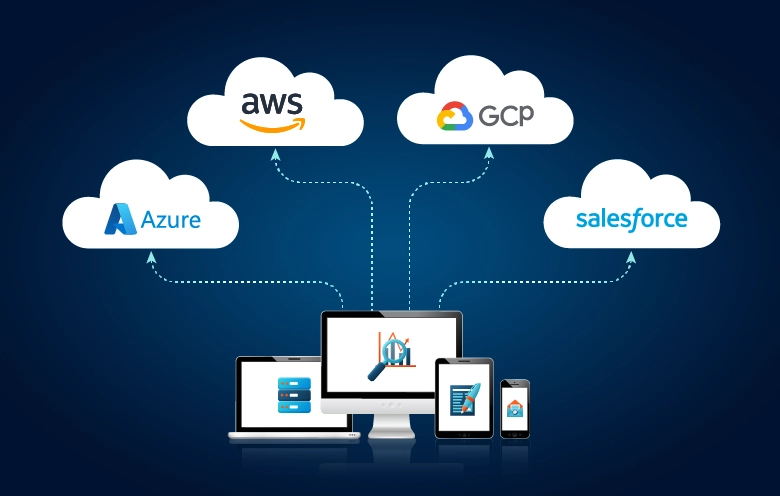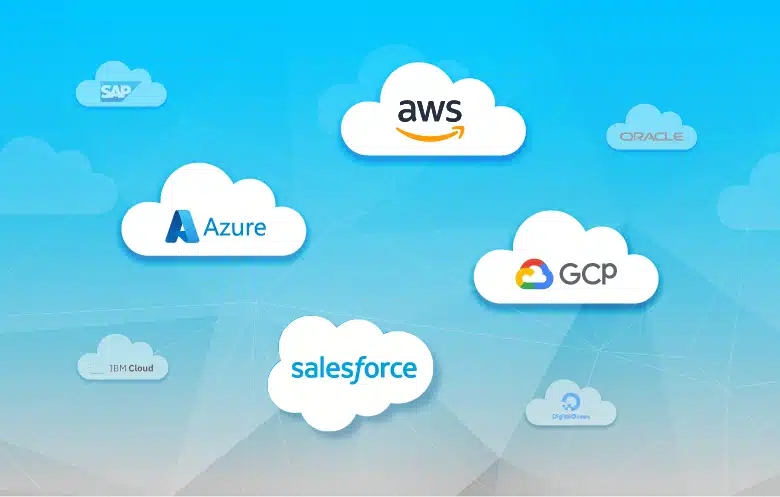A cloud migration strategy is a well-defined process that enables an organization to shift its data, applications, and infrastructure from an on-premises environment to a cloud environment. It’s more about aligning IT infrastructure with business objectives.
The right cloud migration service can help you gain the benefits that the cloud offers when you move your data to the cloud or choose a cloud platform. Without clear planning, your organization can risk operational disruption and significant financial loss. When done right, cloud migration enhances disaster recovery, boosts scalability, and drives cost efficiency.

In this blog post, we will explore what a cloud migration strategy is, its benefits, the 7 Rs, a step-by-step guide to the cloud migration process, tools, and challenges.
What is a cloud migration strategy?
A cloud migration plan is a road map in which an organization defines the process of how it can migrate its data and applications from on-premises or legacy systems to a cloud environment. The plan includes a detailed analysis of current infrastructure, meticulously evaluating and ranking workloads, and a clear vision of what results are desired.
It guarantees smooth and secure transitions, reducing disruption and increasing productivity. It must incorporate comprehensive planning in selecting the appropriate cloud infrastructure, platform, and deployment models.
For instance, Siemens, a global technology and industrial manufacturing company, has achieved a 90% reduction in control-system alerts and 85% lower infrastructure costs by adopting a cloud migration strategy.
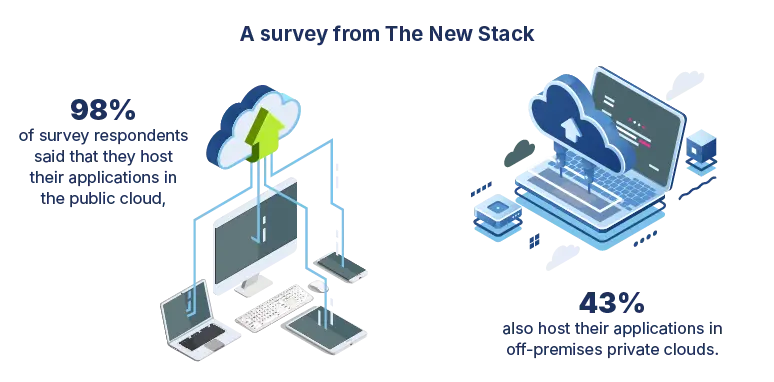
What are the benefits of adopting a cloud migration strategy?
A well-planned cloud migration strategy helps organizations lay the foundation for an effective and scalable IT ecosystem. Here are the key advantages:

-
Scalability
Cloud computing migration plans can scale up or down to meet the changing needs of the business. Cloud scalability allows organizations to address short-term upsurges by enhancing systems’ memory and storage capacity and minimizing them when there is no requirement. You can also add and remove resources, according to your business requirements.
-
Cost
When migrating to the cloud, you only pay for the service you use. You don’t have to invest in hardware to set up an IT infrastructure. A third-party cloud service provider manages servers, thus reducing maintenance costs. The money that is saved can be used for innovation or to enhance other existing processes or services.
-
Performance
As all the information and applications are stored on the cloud, users can access them from any location. As data is constantly accessible through the cloud, it reduces downtime and the chance of low latency. As a result, it improves the overall performance.
-
Disaster recovery and business continuity
By adopting cloud services, you can manage disaster recovery, as your data remains safe on the cloud. Cloud providers have access to the latest technologies. This ensures data is backed up and stored regularly. Thus, minimizing downtime and data loss.
-
Security
Cloud storage provides data security by storing sensitive data and apps on a cloud server. Most cloud service providers eliminate infiltration by keeping up with regular updates and implementing firewalls. This proactive step keeps your system safe and ensures compliance.
What are the “7 Rs” of cloud migration strategy?
The “7Rs” of the cloud migration strategy offer a structured approach for cloud data migration. Originally, the “5 Rs” were released by Gartner and later extended to “7Rs” by AWS. Each “R” represents a specific migration strategy. Let’s explore each migration strategy in detail:
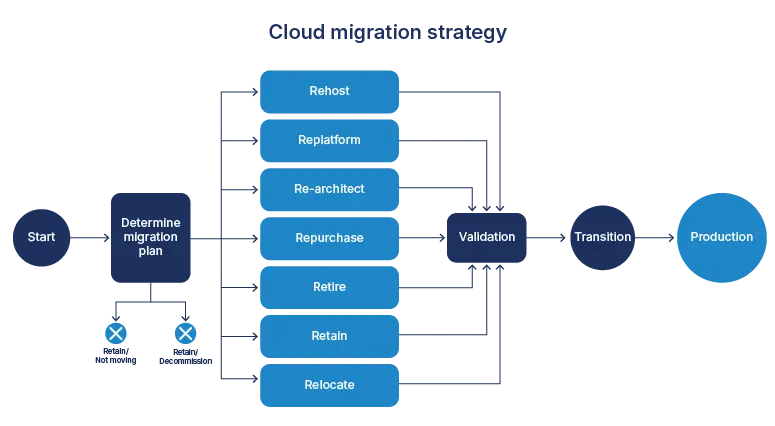
-
Rehost (“lift and shift”)
As the name suggests, this process includes lifting your applications and infrastructure from on-premises and shifting them to the cloud. The IT environment is completely transferred to the cloud, without making any major changes for better performance. Now your data and applications are hosted on the cloud data center with the latest technology, which is maintained by a cloud service provider. This method is suitable for businesses that are adopting cloud migration as the first step.
-
Replatform
This cloud migration strategy involves making some cloud optimizations to achieve benefits without changing the core architecture. Replatforming undergoes a few modifications that can involve making changes in the database or operating system to achieve noticeable benefits. It is suitable for businesses that are looking to simplify and optimize the application they currently have.
-
Repurchase
This strategy entails moving your IT environment to a new cloud-native product, mostly to a SaaS platform. For example, shifting CRM to the Salesforce platform. Repurchasing requires time and planning to navigate the application’s functionality and the process of using it. Organizations must help teams adapt to cloud applications and their features to understand industry best practices. Cloud migration services can effectively navigate cloud transfers.
-
Refactor
This approach involves re-architecting applications to take advantage of unique cloud features. Refactoring means restructuring the architecture of apps before and after migration, keeping the cloud in mind. This cloud migration strategy can be time-intensive and costly. Thus, the resulting benefits can far exceed the potential risks. For instance, a legacy application built to accomplish a specific task might still perform the task effectively, but it might be difficult to add new features to address the evolving needs of the business.
-
Retire
When you closely monitor your on-premises applications, you might realize some of your applications are no longer useful. In this situation, you turn them off to reduce technical debt and maintenance costs. Retiring applications eliminate redundancies that are not in use. This cloud migration technique requires time and planning, as there can be other applications that are dependent on the retiring application that need to be addressed.
-
Retain
When you migrate some of your applications to the cloud, there might be some applications that need to be retained due to security reasons. The retaining strategy entails that not all your applications are suitable for the cloud, or your applications have low latency requirements that support an on-premises model. After thorough planning, you might identify that the cost and effort of migration are more than the benefits received. As a result, it is wise to revisit the idea of on-premises storage.
-
Relocate
AWS describes relocating as a “hypervisor-level lift and shift”. In this cloud computing migration strategy, applications move between hypervisors with less modifications. This migration strategy is ideal for virtual transfer to cloud infrastructure. It can be achieved by reprovisioning from scratch, a cold migration, or a live migration.
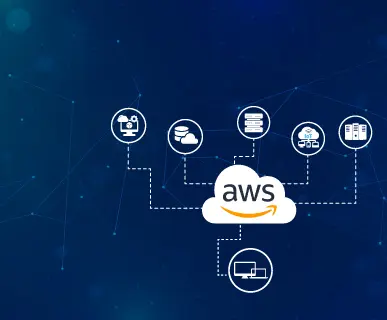
What is the step-by-step guide to the cloud migration process?
While executing a cloud migration strategy, you need to have a properly planned approach to avoid operational missteps. Here are the steps for a cloud migration strategy that you need to execute for successful implementation.
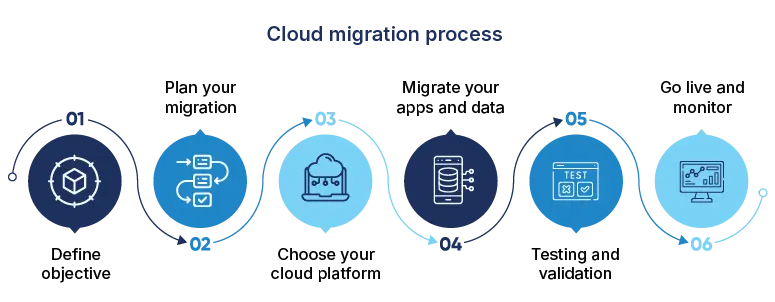
Step 1: Define objective
Start by defining your business objective and the expected outcome from the cloud migration strategy. Your cloud application migration should align with your business objectives. Answering the following questions will help you understand the objective of migration.
- Why do you want to migrate data and apps to cloud?
- What will you be migrating to?
This will help you understand the complexity of the process. For instance, if you are migrating a few data and apps to protect them from disaster, cloud migration will be less intricate than transferring the complete IT infrastructure.
Step 2: Plan your migration
In this step, you need to conduct a thorough assessment for readiness and planning for the digital assets. It is essential to assess your dependency on other applications and data. Look for data that is less critical and complies with security standards during the first round of migration. Identifying your business requirements will help you create a robust strategy, which is essential for migration.
Step 3: Choose your cloud platform
Companies employ a vast array of cloud platforms based on their scalability and applications. Consequently, you have to determine your requirement of cloud solutions and select a platform that suits your business aim and process. However, choosing a specific cloud platform that suits your business needs may be a challenging process if you are new to the cloud. Engage with certified professionals who offer cloud migration solutions to tackle the complex issues of cloud integration.
Step 4: Migrate your apps and data
Data migration is one of the intricate steps of the cloud migration process. While migrating data, consider factors such as data volume, latency, and security threats. Moreover, the placement of applications and data plays a significant role in their functioning. Therefore, an organization must have a strong architecture for data and application migration. If your data is transferred to the cloud but the access methods are still on-premises, you won’t achieve the desired results.
Step 5: Testing and validation
Once the data and applications are placed in the cloud, test them comprehensively. Ensure they work properly in the cloud environment. Test all aspects of performance like scalability, security, and reliability. This reduces downtime during migration. Verify and test data and applications regularly for a smooth transition.
Step 6: Go live and monitor
After testing is done, deploy your workloads on the cloud. Constantly monitor cloud performance and security aspects to identify and address issues before they arise. Proactively manage your cloud resources through robust monitoring to ensure optimal performance.
Which cloud migration tools should be used?
Cloud migration is a difficult process, but there are numerous tools available that are intended to facilitate the process. Every tool is intended to simplify the on-premises to cloud migration process. Let’s take a look:
- Discovery tools: Deeply examine applications, architecture, data, hardware, and software dependencies. These tools help organizations understand which cloud service can be used to replicate an entire process.
- Resource discovery tools: This tool helps organizations understand how teams are using applications and their services. It also navigates the required functionalities to an application or database in the cloud.
- Migration and installation tools: These tools help organizations migrate data, applications, and network configurations to cloud servers and monitor their performance.
- Reporting and graphing tools: Stakeholders use these tools to track and validate the process during the migration of apps and data, as well as after the migration is complete.
What are the challenges of adopting a cloud migration strategy?
Cloud migration strategies come with their own set of challenges that organizations must be aware of. Navigating these hurdles is essential for a successful transition. Here are cloud migration challenges and their solutions:
-
Security and compliance
- Challenge: Ensuring data security and compliance while adopting a cloud model can be a challenging task, requiring careful planning and execution.
- Solution: Work with a cloud service provider to implement end-to-end encryption and robust security features that adhere to regulatory compliance.
-
Cost management
- Challenge: Although cloud computing can be cost saving, a lack of planning and resource management can lead to unexpected expenses.
- Solution: Collaborate with stakeholders and create a comprehensive budget and track all the expenses to avoid overspending.
-
Downtime and business continuity
- Challenge: Applications with high throughput take more time to send data over the internet. This causes downtime and reduces productivity.
- Solution: Scheduling migration during low or zero production hours can minimize downtime. Implementing a backup strategy can enhance business continuity.
-
Infrastructure compatibility
- Challenge: Some applications will not be compatible with the cloud environment. Deciding to rearchitect or replace these applications can be a difficult task, impacting time and budget.
- Solution: Look for experts who provide cloud consulting services to assess compatibility in the early stage and make necessary changes.
Realize the optimal ROI by investing in cloud migration
A modern cloud migration strategy requires a well-planned approach that balances cost optimization and business outcomes. Organizations can achieve optimal results by combining strategic migration planning and choosing the right platform. Many organizations, both large and small, have successfully moved to the cloud. According to Gartner, moving workloads to the cloud helps reduce operational burden, freeing up resources and staff from maintenance-heavy tasks so they can focus on innovation and growth. Companies that are still using legacy systems should consider moving part of their applications to the cloud to initiate the transition. But, to gain maximum benefit, major operations should be transferred to the cloud. Security is also a significant concern, 80% of organizations are experiencing security breaches. Cloud applications offer security benefits that are stronger than on-premises applications.
It’s time to future-proof your operations by investing in cloud migration. Begin your journey by choosing a cloud service provider today and conducting a readiness assessment.
FAQs
1. What are the 4 types of cloud services?
The four main types of cloud services are IaaS, PaaS, SaaS, and FaaS (serverless). IaaS gives you basic infrastructure like servers and storage, while PaaS provides a platform to build applications. SaaS delivers ready-to-use apps, and FaaS lets you run code without managing servers.
2. How to plan an effective cloud migration strategy in AWS?
Start by assessing your existing workloads and setting clear business goals. Use AWS tools like the Migration Hub and AWS Well-Architected Framework to plan and track progress. Finally, migrate in phases, test continuously, and optimize resources for cost and performance.
3. How to plan an effective cloud migration strategy in Azure?
Begin with a cloud readiness assessment to understand what applications and data you can move. Use Azure tools like Migrate, Advisor, and Cost Management to design the migration roadmap. Execute step by step, starting small, validating, and scaling gradually.
4. How does a cloud migration strategy work?
A cloud migration strategy provides a roadmap for moving data, applications, and workloads to the cloud. It helps organizations decide the right approaches like rehosting, replatforming, or refactoring, based on their needs. The process ensures minimal disruption while improving scalability and performance.
5. What are the types of cloud migration?
The main types are rehosting (lift-and-shift), replatforming, refactoring, repurchasing, retiring, and retaining. Each approach depends on business needs, costs, and application complexity. Organizations often use a mix of these types for different workloads.
6. What are the four main phases of cloud migration?
The four key phases are assessment, planning, migration, and optimization. Assessment identifies workloads and dependencies, while planning sets the roadmap. Migration moves the workloads, and optimization ensures performance, security, and cost-efficiency.
7. Why should one migrate to the cloud?
Migrating to the cloud helps reduce infrastructure costs and improves flexibility. It also enhances scalability, making it easier to handle growth or demand spikes. Plus, it strengthens disaster recovery and security capabilities.
8. What role does AI play in modern cloud migration strategies?
AI helps automate migration tasks like workload assessment, data mapping, and performance monitoring. It predicts potential issues and optimizes resources for cost savings. This makes the migration process faster, smarter, and less error prone.
9. What challenges do organizations face when migrating hybrid or multi-cloud setups?
Organizations often struggle with integration across different platforms and managing data consistency. Security and compliance requirements can add complexity. Cost control and performance optimization are also harder in multi-cloud environments.
10. How can a comprehensive cloud migration strategy align with long-term business goals?
A solid strategy ensures that migration decisions support scalability, innovation, and cost efficiency. It aligns technology changes with growth plans, customer experience, and market competitiveness. Therefore, cloud adoption drives both immediate and future business value.
11. What is the decision point for choosing a cloud application migration strategy?
The decision point comes when evaluating the application’s business value, complexity, and technical fit for the cloud. Factors like cost, security, and performance influence which migration path to choose. Ultimately, it’s about balancing risks and benefits for long-term success.


